Essential Forest Disease Control Methods Every Forester Should Know
- August 12, 2024
- 0 comment
Forests are vital ecosystems that provide numerous ecological, economic, and social benefits. They play a critical role in maintaining biodiversity, regulating the climate, and supporting the livelihoods of millions of people worldwide. However, forests are increasingly threatened by a variety of diseases that can have devastating impacts on tree health, forest structure, and overall ecosystem functionality.

Effective disease control methods are essential for foresters to maintain forest health and productivity. Therefore, they will delve into the essential forest disease control methods that every forester should know, ensuring a comprehensive understanding and practical application in forest management.
List of Essential Forest Disease Control
- Preventive Measures
- Integrated Pest Management (IPM)
- Monitoring and Early Detection
- Management of Invasive Forest Diseases
- Restoration and Rehabilitation
Understanding About Essential Forest Diseases Control
Forest diseases are caused by a variety of pathogens, including fungi, bacteria, viruses, and nematodes. These pathogens can infect trees, leading to symptoms such as leaf spots, cankers, dieback, and root rot. The spread and severity of forest diseases are influenced by environmental factors, such as climate, soil conditions, and forest management practices. Understanding the nature of these diseases and their impacts on forests is the first step in developing effective control strategies.
Disease Identification and Diagnosis
Accurate identification and diagnosis of forest diseases are crucial for implementing effective control measures. Foresters should be trained in recognizing common disease symptoms and understanding the life cycles of pathogens. This involves regular monitoring and inspection of forests to detect early signs of disease. Advanced diagnostic tools, such as molecular techniques and remote sensing technologies, can also aid in the accurate identification of pathogens and the assessment of disease spread.
1. Preventive Measures
Prevention is always better than cure when it comes to forest diseases. Implementing preventive measures can significantly reduce the risk of disease outbreaks. Some essential preventive strategies include:

- Selecting Disease-Resistant Species and Varieties: Choosing tree species and varieties that are resistant to common diseases can help minimize the impact of pathogens. Foresters should consider local conditions and the specific disease pressures in their area when selecting species for planting.
- Maintaining Tree Health: Healthy trees are more resistant to diseases. Foresters should ensure proper tree nutrition, adequate water supply, and optimal growing conditions to promote tree vigor and resilience against diseases.
- Practicing Good Hygiene: Hygiene measures, such as sanitizing tools and equipment, can prevent the spread of pathogens. Foresters should also avoid moving soil and plant material from infected areas to healthy sites.
- Implementing Quarantine Measures: Quarantine regulations can help prevent the introduction and spread of invasive pathogens. Foresters should comply with local and international quarantine guidelines to protect forest health.
2. Integrated Pest Management (IPM)
Integrated Pest Management (IPM) is a holistic approach that combines various strategies to manage forest diseases effectively. IPM involves a combination of biological, cultural, mechanical, and chemical control methods to minimize the impact of diseases while ensuring environmental sustainability.

- Biological Control: Biological control involves using natural enemies, such as predators, parasites, and pathogens, to suppress disease-causing organisms. For example, introducing beneficial fungi that outcompete harmful pathogens can help reduce disease incidence. Foresters should promote biodiversity and maintain healthy ecosystems to support natural enemies.
- Cultural Control: Cultural control methods involve modifying forest management practices to reduce disease risk. This can include practices such as crop rotation, intercropping, and adjusting planting densities to minimize pathogen spread. Proper site selection and maintaining species diversity can also reduce disease susceptibility.
- Mechanical Control: Mechanical control methods involve physical removal or destruction of infected plant material. This can include pruning infected branches, removing diseased trees, and controlling weeds that may harbor pathogens. Foresters should use appropriate techniques to minimize damage to healthy trees and prevent pathogen spread.
- Chemical Control: Chemical control involves the use of fungicides, bactericides, and other chemical treatments to manage forest diseases. While chemicals can be effective in controlling pathogens, they should be used judiciously to avoid environmental contamination and resistance development. Foresters should follow recommended application rates and timing to maximize efficacy and minimize adverse effects.
3. Monitoring and Early Detection
Regular monitoring and early detection are essential components of forest disease management. Foresters should conduct systematic surveys and inspections to identify disease symptoms and assess the extent of pathogen spread. Early detection allows for prompt intervention and reduces the likelihood of severe disease outbreaks.

- Remote Sensing and GIS Technologies: Remote sensing technologies, such as satellite imagery and drones, can provide valuable information on forest health and disease distribution. Geographic Information Systems (GIS) can help map disease hotspots and monitor changes over time, enabling targeted management interventions.
- Citizen Science and Community Engagement: Engaging local communities and citizen scientists in monitoring efforts can enhance disease surveillance. Community members can report unusual tree symptoms and contribute to early detection efforts. Public awareness campaigns can also educate communities about the importance of forest health and disease prevention.
4. Management of Invasive Forest Diseases
Invasive forest diseases pose a significant threat to native ecosystems and biodiversity. Managing invasive pathogens requires a coordinated approach and collaboration between various stakeholders, including government agencies, researchers, and local communities.

- Rapid Response and Containment: When an invasive disease is detected, rapid response measures should be implemented to contain its spread. This can include quarantines, movement restrictions, and targeted removal of infected trees. Early intervention is critical to prevent the establishment and spread of invasive pathogens.
- Research and Development: Ongoing research is essential to understand the biology and ecology of invasive pathogens and develop effective management strategies. Foresters should collaborate with research institutions and stay informed about the latest scientific advancements in forest disease management.
- Public Awareness and Education: Raising public awareness about invasive forest diseases and their impacts can help prevent unintentional introductions and spread. Educational programs and outreach efforts can inform stakeholders about best practices for preventing and managing invasive pathogens.
5. Restoration and Rehabilitation
Restoring and rehabilitating diseased forests is an important aspect of forest disease management. Foresters should develop and implement restoration plans to promote ecosystem recovery and resilience.

- Replanting and Reforestation: Replanting diseased areas with disease-resistant species and promoting natural regeneration can help restore forest health. Foresters should select appropriate species and planting techniques to ensure successful establishment and growth.
- Soil Health Management: Healthy soils are essential for tree health and disease resistance. Foresters should implement soil management practices, such as adding organic matter, improving drainage, and avoiding soil compaction, to enhance soil fertility and structure.
- Long-Term Monitoring and Adaptive Management: Restoration efforts should be accompanied by long-term monitoring to assess the success of interventions and adapt management practices as needed. Foresters should be prepared to adjust their strategies based on monitoring results and changing environmental conditions.
Final Conclusion
Effective forest disease control is crucial for maintaining forest health and ensuring the sustainability of forest ecosystems. By understanding the nature of forest diseases, implementing preventive measures, and adopting integrated pest management strategies, foresters can mitigate the impacts of pathogens and promote resilient forests. Continuous monitoring, early detection, and collaborative efforts are essential components of successful disease management. With the right knowledge and practices, foresters can protect forests from the threats posed by diseases and contribute to the conservation of these invaluable natural resources.
Frequently Asked Questions (FAQs)
- What are the common types of forest diseases?
Forest diseases are primarily caused by fungi, bacteria, viruses, and nematodes. These pathogens can lead to symptoms like leaf spots, cankers, dieback, and root rot. - Why is accurate disease identification important in forest management?
Accurate identification allows for the implementation of effective control measures. It helps foresters understand the specific pathogens involved and tailor their management practices accordingly. - What are some preventive measures for forest diseases?
Preventive measures include selecting disease-resistant species, maintaining tree health, practicing good hygiene, and implementing quarantine regulations to prevent the spread of pathogens. - How does Integrated Pest Management (IPM) help in controlling forest diseases?
IPM combines biological, cultural, mechanical, and chemical control methods to manage diseases effectively while ensuring environmental sustainability. It promotes a holistic approach to disease management. - What role does biological control play in managing forest diseases?
Biological control involves using natural enemies like predators, parasites, and beneficial microorganisms to suppress disease-causing pathogens, reducing the need for chemical treatments. - How can cultural control methods reduce the risk of forest diseases?
Cultural control methods include practices like crop rotation, intercropping, adjusting planting densities, and maintaining species diversity to minimize pathogen spread and disease susceptibility. - What are some mechanical control methods for forest diseases?
Mechanical control involves physical removal or destruction of infected plant material, such as pruning infected branches and removing diseased trees, to prevent pathogen spread. - When should chemical control be used in forest disease management?
Chemical control, involving fungicides and bactericides, should be used judiciously and as a last resort. It’s important to follow recommended application rates and timings to avoid environmental harm and resistance development. - How does monitoring and early detection aid in forest disease control?
Regular monitoring and early detection enable prompt intervention, reducing the likelihood of severe disease outbreaks. Advanced technologies like remote sensing and GIS can enhance these efforts. - What are the key strategies for managing invasive forest diseases?
Key strategies include rapid response and containment, ongoing research and development, public awareness, and education. Collaborative efforts among stakeholders are crucial for effectively managing invasive pathogens.
We hope this guide helps you understand the essential forest disease control methods every forester should know. Have experiences with any of these methods, or additional tips for managing forest diseases? Share your thoughts and join the conversation below. Your insights could help others protect their forests and contribute to healthier ecosystems. Don’t forget to share this article with fellow foresters and conservation professionals!

Gilbert Griffin
Forestry AuthorGilbert Griffin is a forest management expert specializing in sustainable practices, forest health, conservation, and land management. With extensive knowledge in pest control, disease management, and habitat restoration, Gilbert develops strategies to preserve forest ecosystems and biodiversity. Passionate about the natural world, Gilbert adapts to changes in forest management and stays updated through continuous learning. Gilbert also provides seasonal advice to optimize forest care throughout the year.


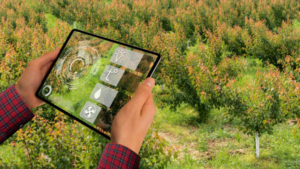

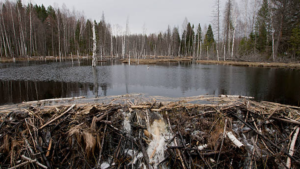


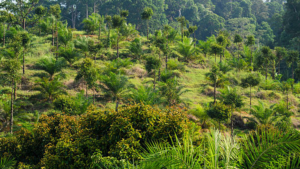

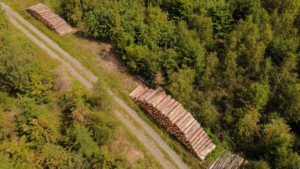

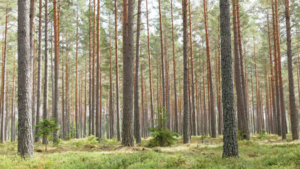
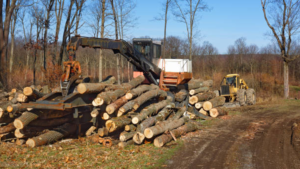
Leave your comment